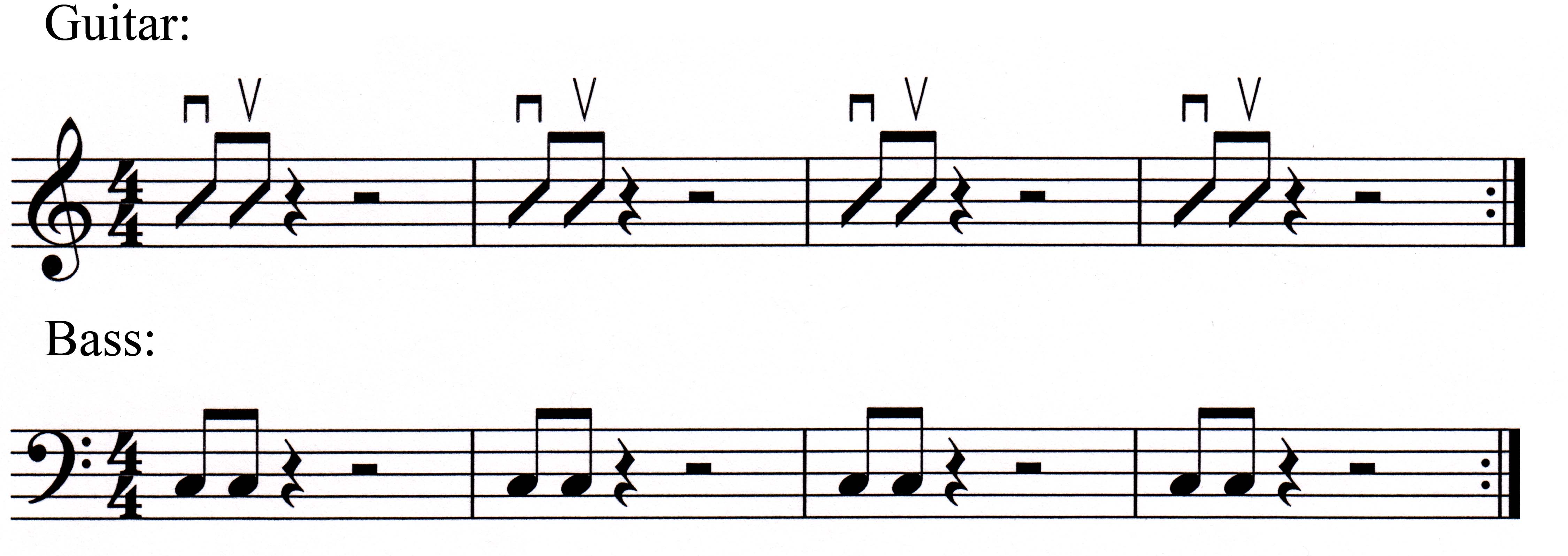

Are You On Time?
Hey, everybody!
This column is going to discuss a very important subject: keeping the beat. This is one of the most important aspects of playing music, whether playing solo and, especially when you are part of a group.
As a professional musician (I tour and work in recording studios - and lead worship at my church), I am expected to understand metronome timing. I am required to know how to keep a steady beat. And in the studio
I am also expected to understand how to work with what is called a "click" track, which is just a recorded metronome tempo that plays during the recording process when we lay down tracks to a song.
A click track is used so everyone knows without question what the beat is, where it is, and how to syncronize and syncopate our playing to that beat. If you can't do it, you don't get the gig; and it doesn't matter how great a player you are. If you don't know how to play a steady tempo, you are worthless for the session, and a waste of their valuable time. It can cost up to $300 an hour just for the studio, not including the engineer's salary, the session musicians' salaries, and any other costs tied to the session - and it can get expensive very quickly!
Now, I am a multi-instrumentalist, I play a number of instruments. When I'm on drums, I am the most obvious representation of the tempo - but that doesn't mean it falls all on my shoulders to make everyone else keep
the beat. That is a false notion that people have. In point of fact, everyone is responsible to understand and maintain a consistent tempo, no matter what instrument they play.
So, then, how do you develop good time keeping skills? Well, the simple answer is, of course, by practicing with a metronome. But how do you do that in a way that is effective and productive, and which will help
you improve and be able to stay consistently on tempo when you're not using a metronome? Good question!
Before we begin, this has to be said:
A lot of players today have learned to play without actual guided and directed instruction from a qualified music teacher. Maybe they played in the school band - where keeping the tempo was emphasized,
and so they've been exposed to it. But most who learned by trial and error, and the Youtube School of Music (which is not a substitute for actual lessons), do not fully appreciate the importance
of keeping good time. This must change. And for anyone involved in Worship - it absolutely must change. You cannot be so irresponsible to believe its okay to fluctuate around the beat. You're supposed to be
giving your best to God! So, get humble and either practice more - with a metronome - with the goal to improve all your abilities or, better yet, sign up with a qualified teacher of your instrument and take some lessons
for at least six months, and have them show you how to effectively use a
metronome.
For guitar players and bass players, it is relatively easy to lay out a series of exercises - and we'll do that here. For keyboard players, your best bet is to go back to your first year of piano instruction, where you
actually used the metronome (your teacher did do that, right?), and start with simple and easy songs
played at a bit slower tempo to reconnect with the metronome.
For drummers, well, if you never used a metronome, I would advise you to go to a drum teacher, and take a series of lessons that are specifically focused on correct application of a metronome.
You can also get a book called "Studio Funk Drumming" by Roy Burns and Joey Farris, and really work out each exercise until you know them inside and out - all while working with a metronome. Just this book
alone will help you overcome a number of problems all drummers struggle with and encounter. Trust me. I still use it after almost 50 years of drumming, to keep myself honest.
For this session, I will lay out a very basic approach. This could be a very long lesson, but we'll just keep it simple and to a reasonable length.
Okay, so here's the first exercise. It's very simple. Turn on your metronome to 60 beats per minute (bpm). Play the following exercise - yes, it's slow. You have to learn the fundamentals of this stuff. Faster is easier
because it's more forgiving, and speed masks bad technique. Too many musicians can play fast, and sound good. But when you slow down the tempo, they fall apart because they cannot play right on the beat.
They're early, they're late, and rarely right on the beat itself. So learn how to do this well, and when you speed up (by slow incremental steps), you will bring good technique forward with you - and sound better for it.
Guitar players: mute the strings and strum a downstroke on the first beat. Rest for the remaining three beats.

Bass Players: play a C note - or any note, really. Let it ring for exactly the whole beat and mute it just as the second beat clicks for the rest of the measure.

What you are striving after is this:
It will take time to learn to use a metronome, to play with it in sync and always in time. Just like everything else you learn, you have to understand how the processes you are learning function. Take your time,
give yourself permission to not get this right away.
Guitar Players: Continue, now playing the first and third beat, raking the strings with downstrokes.

Bass Players: Continue, now playing the first and third beats.

The rests - the silence - is just as important as the notes played. You must understand silence as well as sound, the value duration, and the value in creating the right atmosphere and feel a song may require.
Continue this exercise in the following manner, each being a separate exercise:
You are learning to identify and play the different beats and rests, and also syncopation. You can add ramp up the metronome, but only by no more than 4 bpm with each cycle. When you start stumbling, don't speed up
until you have that cycle mastered.
Guitar players, you can begin to substitute chords once you begin to get this clear in your head, and are able to match the metronome. But observe all rests - avoid slop. That goes for bass players, too! No slop allowed.
The next step will be to put everything into eighth note groups. Here are is the first one, for guitar and bass. Guitar players do an down and then an up stroke. The beat will always be a down stroke. Bass players,
alternate fingers.

Beyond this, you would simply repeat the process as above for quarters:
It can get far more intense than this, but the idea is to help you break down the beat into component parts, understand their function in relation to the beat, and play them correctly when and where they belong. As
you learn to do this, you are beginning to understand why it is so important - and necessary an ability to possess.
Now, do not try to take short cuts on this stuff. You only cheat yourself - and the people with whom you will be playing... and the congregation, too. Don't be that person, who comes ill prepared, thinking they
got it covered. You only have it covered when you actually do the work without compromising the integrity of the practice you must do to improve.
Until next time, keep making a joyous noise for the Lord.